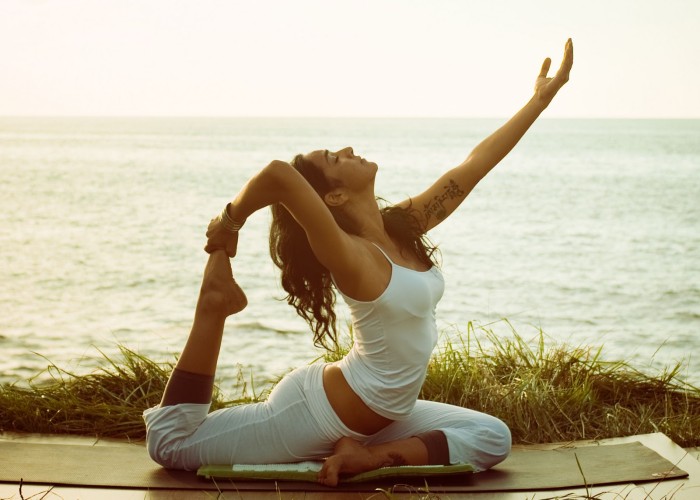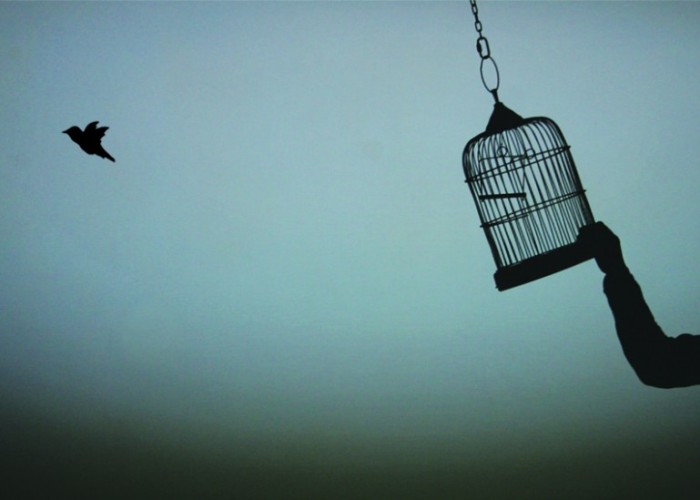There’s a Buddhist saying that “Life is suffering.” I like to look for exceptions to this rule. Maybe that’s why they say it; to get us to appreciate the opportunities when we are not suffering. I’ve had my share of suffering; and I’ve had many opportunities to find my way out of the suffering. I have my own saying, “You are either encountering resistance or sliding into bliss.” The key to finding my way out of suffering has been learning the various ways around, through or of letting go of resistance. Resistance is the suffering. When you can learn to let go of resistance, you will know how to relieve suffering. The key to my good health, great relationships, wonderful family, and work that completely inspires me has been learning to use resistance to my advantage and let go of suffering.
The truth is, things change. Like the flow of time itself, change is constant. Days come and go. Seasons cycle. Years come and go. Lifetimes pass. With these cycles of time, things change. The body has many wonderful mechanisms for adapting to change. Our hormones shift. Our metabolism increases and decreases. Even our genes can experience epigenetic changes during our lifetime in response to changes in our environment.
The human body is built for adaptation to extreme change. We are also designed to appreciate comfort, and when we find a comfortable situation, we are hesitant to let it go. And yet sometimes we seek out challenges. We play sports, we pursue degrees, we climb mountains, and we explore other adventures. It is these challenges that build our resilience and teach us about using resistance for growth and self-development.
The key, then, to relieving suffering is learning to identify “resistance”, so that we can use it to our advantage. Resistance takes many forms, particularly emotional resistance. However, physical and emotional resistance are intertwined, and accepting that perspective enables one to more readily identify all forms of resistance. A familiar example of physical resistance is the physical resistance we encounter when lifting weights, a simple analogy, that also shows us the potential for using resistance to make us stronger. By challenging ourselves with physical resistance, we actually grow stronger and capable of dealing with greater levels of resistance, as our body adapts and grows.
A similar sort of growth occurs when one is challenged with emotional stressors. One of the factors required for the development of emotional resilience is encountering some form of stress. Another requirement for the development of resilience is adequate support in releasing stress following a traumatic event. Without adequate social or emotional support, traumatic experiences may result in post-traumatic stress disorder (PTSD) – a situation in which the distress of the event persists well after the event is over. For example, children who encounter traumatic experiences, and who have caring support from people in their lives who give them a safe place to recuperate, are the ones who become resilient. However, children who experience a stressful experience but do not have social and emotional support become traumatized and may suffer from PTSD. The key to adequate support is the ability to feel safe. And here again we have a sensation with both physical and emotional components.
The physical sensation of resistance is the sense of tightening, drawing in, or tension. The physical sensation of safety is the ability to let go, expand, or release. If I suggest that you make a tight fist with your hand, and you do that, you will experience the tightening, clenching and tension in your hand. We have a natural reflex to flinch or contract when we are startled or stressed. Alternatively, if I suggest that you let go of this tension and release the hand, it will readily reopen and even relax. We have a natural tendency to let go when we feel safe. We use our hands a lot, and have not only refined the muscles in our hands, but also the neuro-muscular connections that allow us to coordinate a mental intention to let go with a muscular response that resembles release and results in the opening of our hand.
Another sense of physical resistance is the tension that we hold in the back of our legs. Reach down to touch your toes and you may readily experience the resistance in your hamstrings or back. We have lost the ability to coordinate our mental intention to let go of the tension in our low back or legs. We may even develop pain in our low back or our hips. Practice makes perfect, and by practicing this stretch, we cultivate the coordination to release this tension. We become more flexible, and less tense or stressed. The same is true of all forms of resistance in your body and in your life.
First, find the physical resistance. Where do you experience the physical tension associated with stress? In your shoulders or back? Perhaps in your jaw, or do you get a headache when stressed? For some it is the heart that beats more quickly during times of stress, while others get an upset stomach from digestive tension. Some people have multiple sensations of tension at once. When you have located the physical tension, the actual physical basis for any emotional suffering, practice cultivates the capacity to coordinate and release the tension of resistance.
When change happens gradually, we may either continually let go in gradual increments, or we may tighten and tense in resistance to the change. When sudden changes occur, eliciting the reflexive startle response and accompanying tension, we also have a choice of practicing awareness of the physical sensations of this tension, such as pain or grief. With practice we can cultivate the capacity to coordinate the release of this tension, which is the physical basis for any emotional suffering. We get in the habit of holding tension associated with trauma, because we have not found a safe space to turn inward and let go. Of course when we do turn inward, what we will find is the physical pain of suffering. Here is where we have a choice. When we are afraid of our pain, we annihilate the sense of safety that is requisite for releasing pain. When we embrace our pain compassionately, as an intrinsic part of being mortal, and honor the senses of our body, even the sense of pain, then we can cultivate the capacity to control and of course release the suffering of pain. It is by embracing all of our sensate experiences, even the sensations of pain and suffering, that we release resistance to healing and begin again that slide into bliss.
Yogis have known for millennia that suffering is held in the tensions of the body, and that through the stretches and asanas of yoga, we can release tension and suffering, thus restoring the slide into bliss. This is the main reason that the popularity of yoga practice has persisted over thousands of years. As a yogi, I can tell you; yoga relieves suffering and enables bliss.
A note on breathing: Yogis and mindfulness experts alike will also tell you that breathing deeply and freely is an integral part of the practice. We let go on the exhale. The infamous “sigh of relief” is evidence of the pleasurable feelings of letting go that we feel when we let out the breath. The gasp of fear is evidence of the tension we experience when startled or hurt. It makes sense that the exhale is the release of that tension.
The key to relieving any kind of suffering is to note the sensate experience of suffering in your body. It will feel like the tension of resistance. When you encounter this suffering or pain within, embrace it with an exhale. Breath out. Gradually cultivate awareness to self-regulate this tension and the capacity to coordinate the release. Let go as you exhale. Continue this practice. You are now releasing resistance and sliding into bliss. Keep going. Enjoy the journey!
—————
Dr. Norris has used these practices in her own recovery from fibromyalgia, as well as recovery from a traumatic brain injury that had resulted in seizures and migraines. She is now pain free and seizure free. She practices yoga, meditation and qigong daily.




